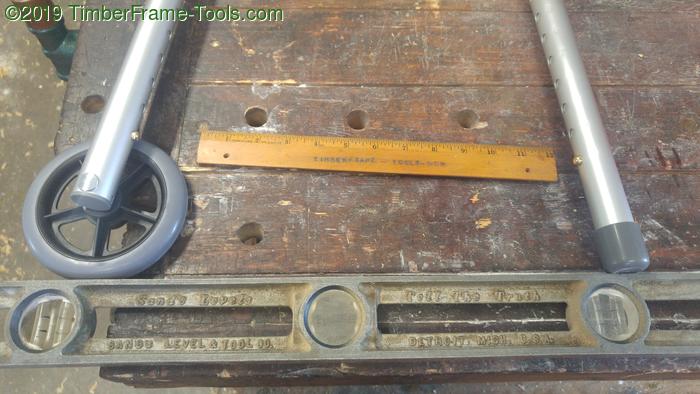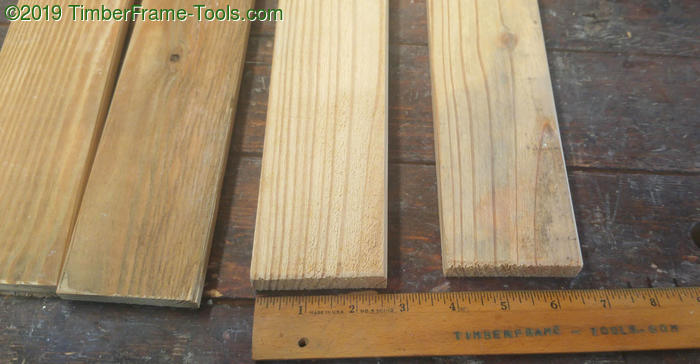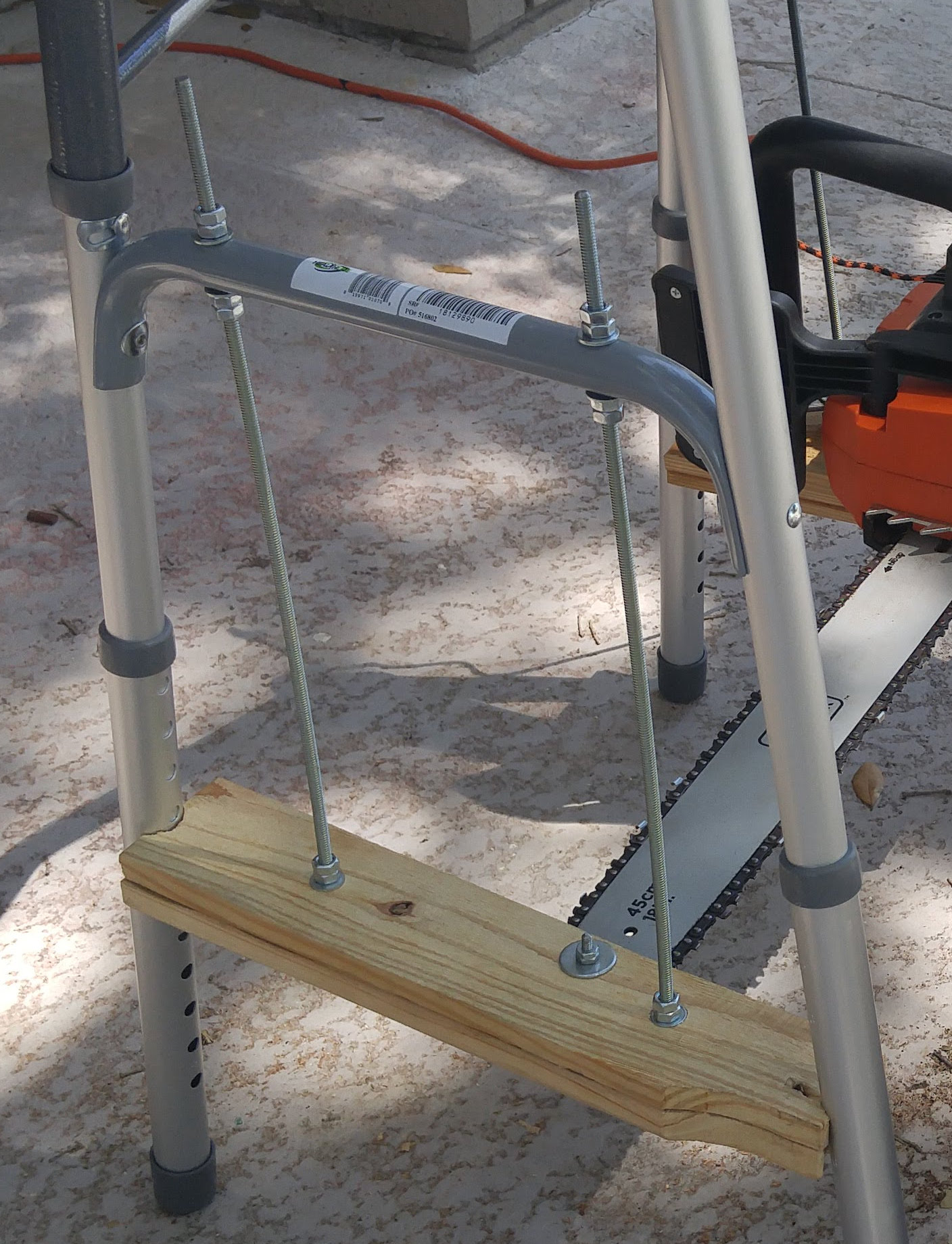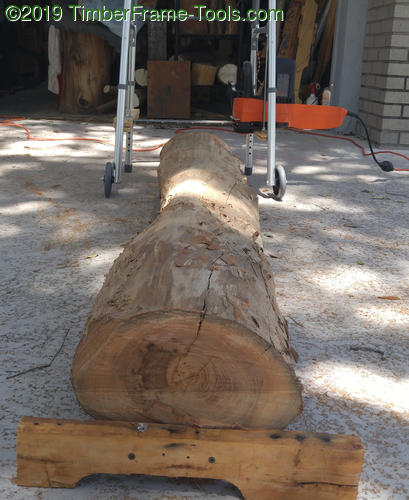Anybody who is into natural woodworking is likely familiar with the “Alaskan Chainsaw Mill.” Carried into the wilderness, slung over a well muscled shoulder and ready to turn logs into lumber. These mills made by Granberg and others are impressive, but that is just not how we roll down in Florida. We are grayer, more seasoned, our backs are more fragile, but we still like to get our inner lumberjack on. So I present to you, the Florida Chainsaw Mill
All age jokes and kidding aside, the Florida Chainsaw Mill works great for me because,
- my driveway is flat because it is made up of concrete panels. It does not have to be level, just flat.
- The height of the chainsaw can be adjusted in 1″ increments by just adjusting the legs of the walker. I chose the walker with the the largest variation in height that I could find.
- Has a capacity for logs that are approximately 16″ (40cm) in diameter
There is not much to it. I attached a Black & Decker 18″ electric chain saw to the walker with 4 sections of threaded rod and a few scraps of wood. It could handle up to a 20″ gas chainsaw if you wanted to use one of those.
I used some pallet scraps that were about 16″ (35cm) long by 3″ (7.5cm) wide and 1/2″ (1cm) thick.
The exact length needs to be about 2″ longer than the distance from the back leg of the walker to the front leg.
The width of the wood needs to be wide enough to wrap around the sides of the legs to provide some stability side to side. The position of the wheel needs to be reversed so that the wheel is at the back of the walker rather than the front.
The threaded rod suspends the pieces of wood from the side rails of the walker
In the suspension notice
- All nuts are jam-nutted with a second nut to keep them in place despite the vibrations of the saw.
- The wood creates a saddle around each leg.
- The saw blade is sandwiched between two pieces of wood.
In order to keep the saw tip from moving, you need to complete the circle of the tip with a compass so that you know where the gear wheel in the front is. Then mark the location of the hole outside of the gear to drill a hole in the bar for a bolt to pass through (hole location indicated with red.).
After everything is mounted, put the Florida chainsaw mill on a workbench or other flat surface. Then carefully adjust the wood rails attached to the threaded rods to make sure the front and back of the chainsaw bar are the same height from the surface, and that the left and right are the same as well. A combination square makes this task easier. This takes some time to get right, but it is completely worth it. Take your time with this leveling step.
Screw in some 2×4 scraps to act as feet to keep the log from rolling. Make sure they are cut just short enough to fit between the front legs of the walker. For best results, try to get the center of the log (the pith) to the same height above the driveway on each end.
Adjust the height of both legs so that they are all on the same setting, and that the blade will remove just the top inch or so of the log.
I used a spring hand clamp on the trigger to make the saw run and I had a piece of paracord tied to the walker handle and then tied to the clamp. I could yank the cord, and it would pull the clamp off the switch.
In the photo above, I am pushing the walker to the right (down the incline). Here you can see that I reverse the walker so that when I am standing behind it, pushing, the cross brace keeps my legs from getting to the blade. This is why the wheels have to be moved to the back, because the back of the walker is really the front of the Florida Chainsaw mill.
The idea of the Florida Chainsaw Mill may seem a bit tongue-in-cheek, but you really can’t argue with the results.
A few passes with the hand plane and the true beauty of the wood emerges.
You can find my review of the Black and Decker electric chainsaw here.
All links are affiliate only. I paid full price for any products and materials mentioned, and I was not paid by anyone to review or promote any product.













This. Is. Amazing!
Thank you.